Modern Masters releases this weekend, and it looks to be one of the most value-packed sets in Magic history! Sadly, there’s no Grand Prix to learn the format for. It’s looking to actually sell at MSRP, so it’ll hopefully be available for a good while. In the meantime, Wizards of the Coast has provided us with a brand new cube to tide us over: the Modern Cube. So, how is it?
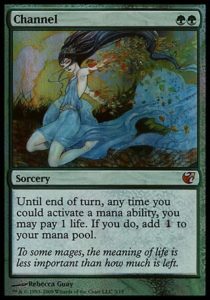
Power Level
Unsurprisingly, the Modern Cube is less powerful than Legacy Cube, but not egregiously so. Sure, it’s missing some of the most broken spells in Magic, like [casthaven]Sneak Attack[/casthaven], [casthaven]Jace, the Mind Sculptor[/casthaven], and [casthaven]Armageddon[/casthaven]. Many of Magic’s most powerful creatures were printed since 2003, however, so they’re all in the cube.
Moreover, I like cubes that have a lower power level. Sure, it feels amazing to play with the broken cards of Legacy and Vintage Cube, but there’s more to Magic than just increasingly large haymakers and generally uninteractive games. It’s refreshing to play a cube where a lower power level changes deckbuilding and draft decisions. When players are racing to [casthaven]Channel[/casthaven] Emrakul, [casthaven]Tinker[/casthaven] [casthaven]Blightsteel Colossus[/casthaven], or storm out [casthaven]Tendrils of Agony[/casthaven], cards like [casthaven]Force of Will[/casthaven] and [casthaven]Duress[/casthaven] are essential, while cards like [casthaven]Polukranos, World Eater[/casthaven] and [casthaven]Staff of Nin[/casthaven] are hilariously ineffectual. In a format where players can’t just win out of the blue, a 5/5 for four and a six-mana card advantage engine have a home.
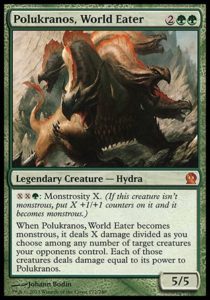
What happens when the format revolves around creatures?
When players don’t have access to game-breaking enchantments and sorceries, they turn to creatures. This changes a lot, particularly when compared to Vintage Cube (where players are usually trying to combo out or resolve backbreaking spells).
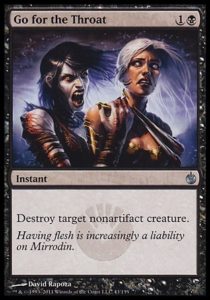
One-for-one removal is a lot better.
[casthaven]Doom Blade[/casthaven] is hilariously bad at dealing with [casthaven]Sundering Titan[/casthaven], but it’s amazing at killing [casthaven]Goblin Rabblemaster[/casthaven], [casthaven]Master of the Wild Hunt[/casthaven], and even [casthaven]Sun Titan[/casthaven] (which has a lot less game-breaking stuff to get back). Cheap interaction is much more valuable when a large portion of creatures don’t kill you on the spot—or do, but can’t be cheated out. It’s also more valuable when it has so many targets.
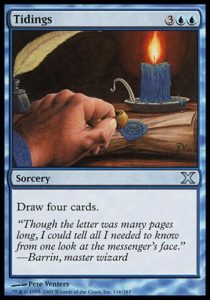
Two-for-ones are much, much better.
The format is slower, so players have time to play more cards. Games are decided by who can outmaneuver or outgrind the other player, rather than merely outpower them. Cards like [casthaven]Skinrender[/casthaven], [casthaven]Mulldrifter[/casthaven], and [casthaven]Tidings[/casthaven] are excellent; and cards like [casthaven]Mind Control[/casthaven] and [casthaven]Sower of Temptation[/casthaven] are absolute bombs.
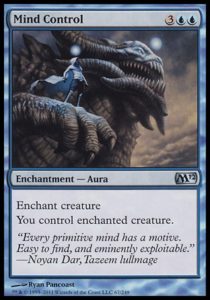
The best bombs are incredible.
Modern Cube format is chunky (it has cards of widely different power level), as opposed to soupy (where many cards, particularly game-ending cards, are numerous and relatively replaceable). In higher powered cubes, I value taking fixing extremely highly, since there are plenty of bombs to go around. However, in Modern Cube, taking a disproportionately powerful card like [casthaven]Sword of Feast and Famine[/casthaven] or [casthaven]Mind Control[/casthaven] is akin to drafting [casthaven]Upheaval[/casthaven] in Legacy Cube—few cards compare. I recommend players get greedy and draft the best cards in the pack rather than an archetype, making the format resemble normal Limited a bit more than the average cube.
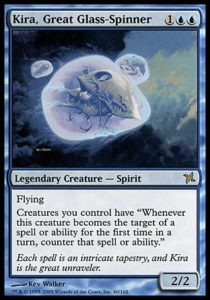
Heavy color requirements
Many of Magic’s best creatures have heavy color requirements. When prioritizing playables over fixing and relying heavily on creatures, many decks simply can’t support more than one color. There certainly seems to be plentiful fixing (and a ton of excellent artifact mana) in Modern Cube, but I’ve nevertheless found my undefeated decks to have all been monocolor or two-color with a light splash and meager fixing. The format rewards color-committed drafters with late bombs and colorless utility lands.
If you combine all four points, you arrive at a conclusion which has won me most of my trophies: [casthaven]Kira, Great Glass-Spinner[/casthaven] is one of the best cards in the format. It’s resilient against almost all removal and protects conditional two-for-ones like [casthaven]Dungeon Geists[/casthaven] and [casthaven]Sower of Temptation[/casthaven].
(Also, you recognize that [casthaven]Master of Waves[/casthaven] and [casthaven]Thassa, God of the Sea[/casthaven] may have been omitted from the cube not due to oversight, but due to interacting too strongly with what the cube encourages players to do.)
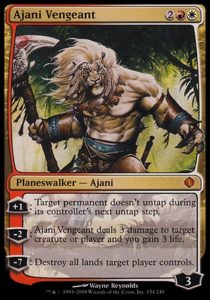
Planeswalkers are really, really good.
Planeswalkers are generally excellent in cube, but when games go longer and boards get stalled, planeswalkers have more chances to be used—and in so doing, take over the game. In particular, planeswalkers able to affect the board are even better than normal, since there are almost always going to be creatures to deal with. Plus, there are cards like [casthaven]Prismatic Lens[/casthaven] and [casthaven]Coldsteel Heart[/casthaven] (which you really should be taking highly) to ramp them out.
So yeah, planeswalkers are great. Except [casthaven]Gideon, Champion of Justice[/casthaven]. He’s just terrible.
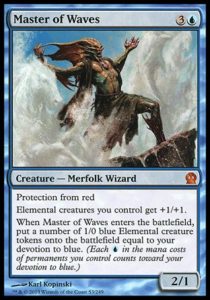
May you all Master Modern!
Modern Cube has been a nice breath of fresh air. I love it every time Wizards grants us a new way to play Limited (or revisit old Limited formats, as with the recent IPA drafts or the Year of Modern Flashbacks). I love all things cube, and while I’ve found Modern Cube to not be quite as replayable as Legacy and Vintage Cube, it’s certainly more enjoyable than Legendary or Twisted Cube. I hope that it will one day return (though I can envision several changes to it along the way, either for balance or just to shift things up a bit). But for now, we’ve got Modern Masters 2017 to look forward to!
And, as always, thanks for reading.
—Zachary Barash
Zachary Barash is a New York City-based game designer. He’s played Magic since 1994, but went on a long hiatus, like many folks. He’s currently pursuing his MFA in Game Design at NYU and designing for Kingdom Death: Monster, a game that is most definitely not Magic.

